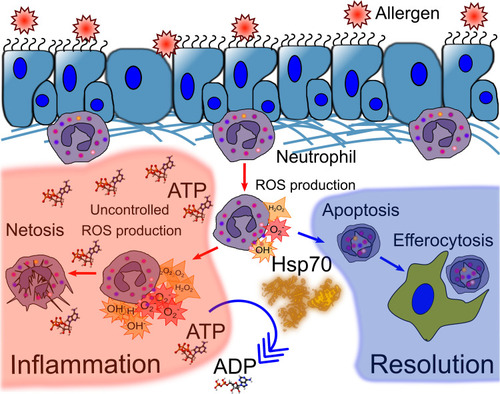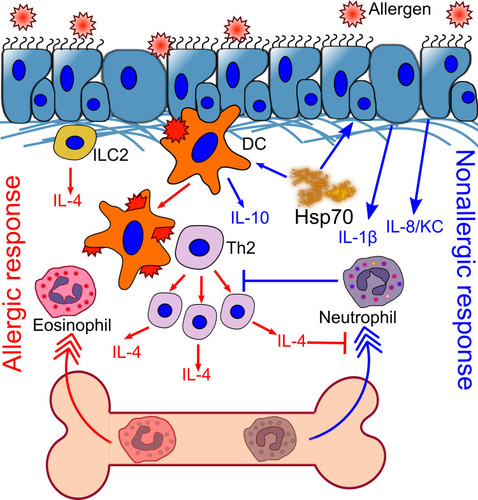Figures & data
Table 1 HSP70 Allergens of Different Species
Figure 1 HSP70 prevents neutrophil hyperactivation at the site of inflammation. Production of reactive oxygen species (ROS) is one mechanism of neutrophil defense against pathogens; however, the trigger of ROS production can also cause damage to host tissues or damage-associated molecular patterns (DAMPS). ATP is known to stimulate ROS production. Uncontrolled ROS production leads to NETosis and inflammation progression. HSP70, as an ATPase, can dephosphorylate ATP to ADP, which is less pyrogenic than ATP, and thus prevent uncontrolled ROS production. Moreover, HSP70 was involved in switching from necrosis and NETosis of neutrophils to apoptosis. Apoptosis and efferocytosis of apoptotic neutrophils are associated with inflammation resolution.

Figure 2 HSP70 induces neutrophil recruitment to the site of inflammation. Exogenous substance challenge induces neutrophil recruitment to the airways. However, inhaled allergen promotes IL-4 production by ILC2, and further by DC-activated Th2 cells. IL-4 concentration is increased locally and systemically. IL-4 blocks neutrophil recruitment, which promotes the recruitment of eosinophils and stimulates allergic airway inflammation. HSP70 activates the production of IL-1β and IL-8 by epithelial cells, which attract neutrophils to the periphery. Neutrophils block Th2 proliferation and allergic airway inflammation. HSP70 also prevents DC maturation and induces IL-10 production.

